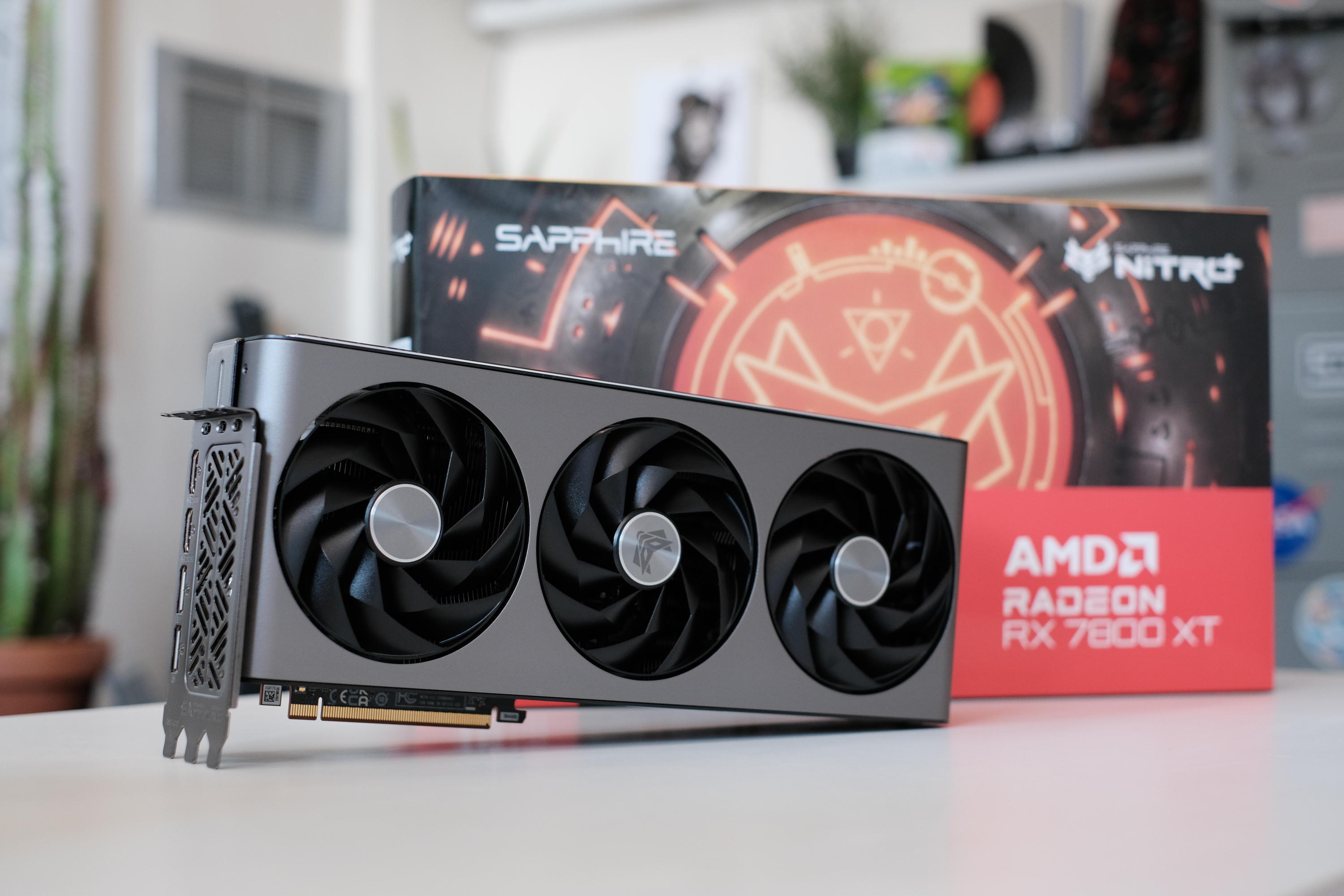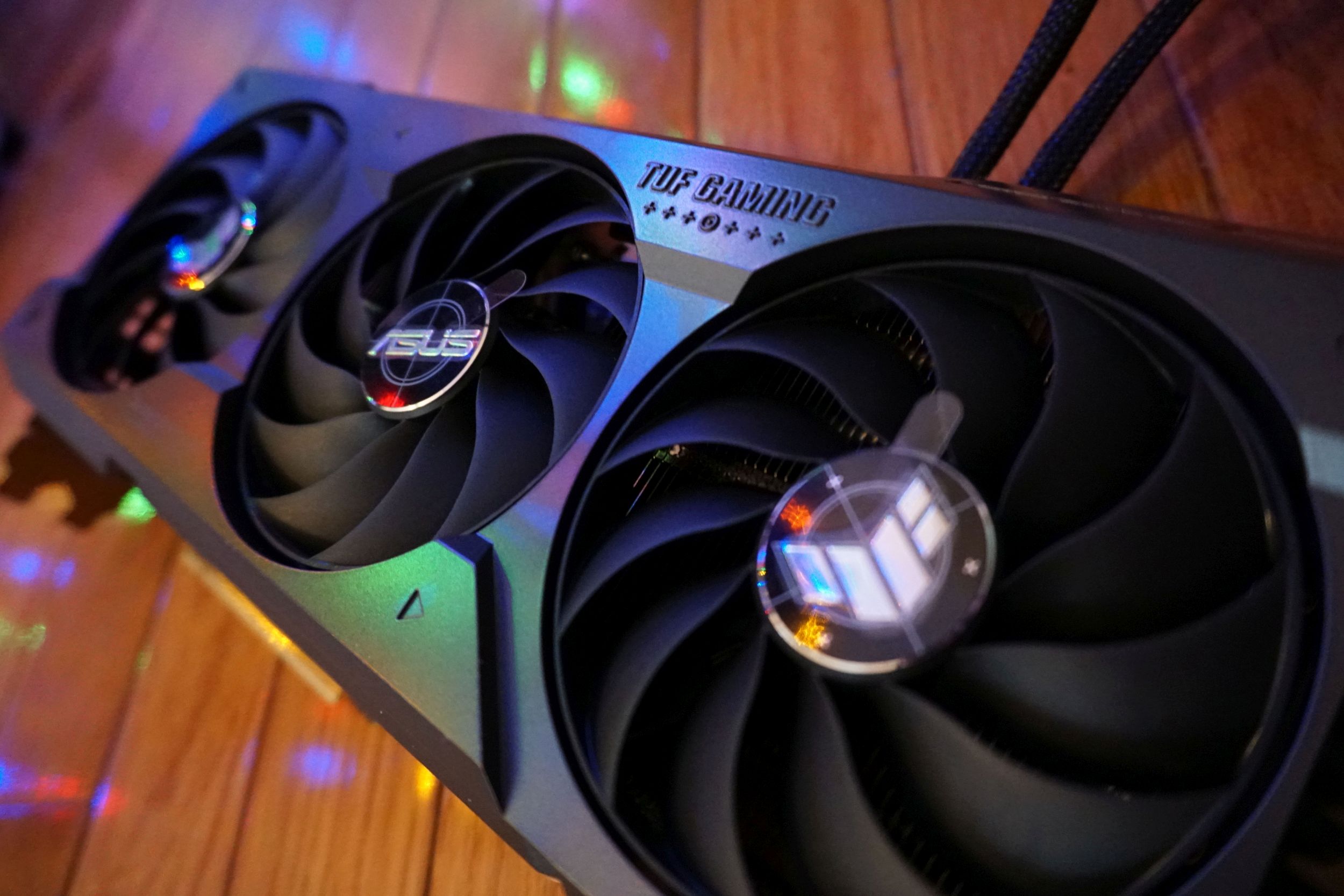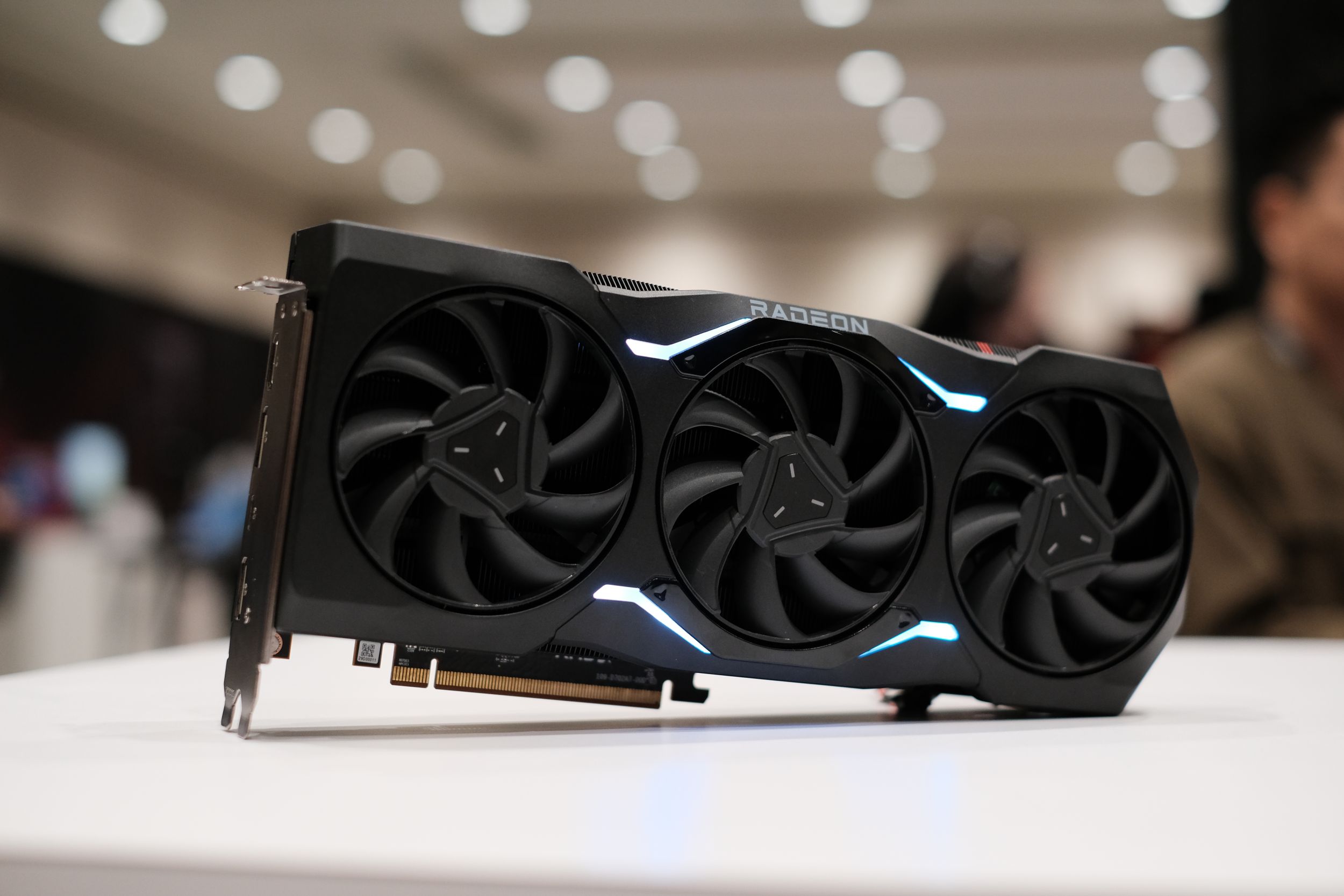Most people who are in the market for a new graphics card have one primary question in mind: Which card will give me the most bang for my buck? Obviously, the answer will vary depending on your budget. Beyond that, there are a number of factors to consider: Raw performance is important, but so are things like power efficiency and supplemental features. And do you want to pay a premium to experience the gorgeous, but performance-intensive visuals possible with real-time ray tracing?
Let us make it easy for you. We’ve tested nearly every major GPU that’s hit the streets over the past couple of years, from $100 budget cards to $2,000 luxury models. Nvidia, AMD, Intel Arc, we’ve benchmarked them all. Our knowledge has been distilled into this article—a buying guide with recommendations on which graphics card to buy, no matter what sort of experience you’re looking for. In general, AMD dominates the sub-$500 space, while Nvidia reigns supreme at the high end, though it’s not always so cut-and-dry.
Note: There are customized versions of every graphics card from a host of vendors. For example, you can buy different GeForce GTX 4080 models from Asus, MSI, and Zotac, among others.
We’ve linked to our complete review for each recommendation, but the buying links lead to models that hew closely to each graphics card’s MSRP. Spending extra can get you hefty out-of-the-box overclocks, beefier cooling systems, and more. Check out our “What to look for in a custom card” section below for tips on how to choose a customized card that’s right for you.
The best graphics cards for PC gaming
AMD Radeon RX 7800 XT – Best graphics card

When it comes to PC gaming, 1440p gaming is widely considered the sweet spot, delivering eye-popping visuals that are much crisper than 1080p gaming, but without the need to splurge on ultra-high-end hardware like you do with 4K gaming. And when it comes to 1440p gaming, AMD’s $500 Radeon RX 7800 XT is the only true 1440p option worth considering.
The Radeon RX 7800 XT delivers smashing 1440p performance, absolutely trouncing its GeForce RTX 4070 rival — despite Nvidia’s card retailing for $100 more. Better yet, it comes with an ample 16GB of memory and a wide memory bus perfect for 1440p, while Nvidia’s rival RTX 4060 Ti GPUs pack nerfed memory configurations (and slower performance) that make them unappealing for long-term gaming at this resolution. And if you have an AMD Ryzen processor, the company’s superb Smart Access Memory feature pushes performance even further.
AMD’s GPU delivers decent ray tracing chops. There’s no doubt that the RTX 4070 bests it in ray tracing, power efficiency, and with juicy extras like DLSS 3 and Nvidia Broadcast. But considering the Radeon RX 7800 XT is so much faster at raw gaming performance and costs significantly less, it’s easily the best graphics card for 1440p — and the best graphics card you can buy overall.
AMD Radeon RX 6600 – Best budget graphics card

AMD’s Radeon RX 6600 is the best graphics card to grab if you’re staying on a strict budget, especially since Nvidia has stopped being competitive in this price range. It goes for around $200 to $220 on the streets these days. With 8GB of fast GDDR6 memory, solid power efficiency, and AMD’s Radeon Super Resolution in tow, the Radeon RX 6600 is a great graphics card for people looking to game at 1080p resolution at 60fps without compromising too much on visual fidelity.
It lags in ray tracing performance, however. If you’re more into playing triple-A games that use ray tracing or the modern DirectX 12 API, give Intel’s Arc A750 a consideration as well. It costs about the same to start. This GPU easily bests the Radeon card on both those fronts, but delivers inconsistent results in games that run the more common DX9 and DX11 APIs. Intel’s engineers are improving Arc drivers by leaps and bounds there, but we still give the Radeon RX 6600 the nod for its better overall consistency.
If you’re on a sub-$200 budget, we’d recommend trying to save a few bucks to try to get a Radeon RX 6600. But if you can’t, consider the $170ish Radeon RX 6500 XT instead — but read our review so you’re keenly aware of its limitations.
AMD Radeon RX 7600 XT – Best 1080p graphics card

If you’re looking for the best 1080p gaming experience, AMD is once again the way to go. The Radeon RX 7600 delivers an average of 35 percent higher performance than its Radeon RX 6600 predecessor, meaning you’ll be able to crank up visuals to High or Ultra even on the most demanding modern games. (Its 8GB memory buffer, common for this price range, comes up a bit short in some of the most memory-intensive games, and required a drop to High.) After years of terrible 1080p graphics cards, the Radeon RX 7600 is a breath of fresh air. While it retails for $270, you can often find it for under $260 on the streets.
It’s atrocious at ray tracing though. If ray tracing and DLSS 3 frame generation are a priority for you, Nvidia’s $300+ GeForce RTX 4060 is an alternative option, with performance well ahead in ray traced games, and just a hair behind in non-RT games. At 1080p, upscaling technologies like DLSS 2 and FSR 2 looks terrible, so they’re not worth factoring in at this resolution.
If you’re able to find a last-gen Radeon RX 6700 XT for $300 or less, we’d actually recommend picking that up, as it delivers comparable gaming performance (except for in ray tracing) to these GPUs, but comes with a much more future proof 12GB of VRAM. It typically sells for $330 or more though, so you’re paying up to get that extra memory versus these more modern GPUs.
Nvidia GeForce RTX 4070 Ti – Best high-end 1440p graphics card

Paying $800 or more for a 1440p graphics card is ludicrous. Our review called Nvidia’s GeForce RTX 4070 Ti “painfully overpriced.” But if you want exceptional performance at 1440p gaming—and only 1440p gaming, as Nvidia hobbled this $800 GPU to run slower at 4K—price be damned, the 12GB RTX 4070 Ti is a great option. It’s ultra-fast, ultra-efficient, excellent at ray tracing, and supports Nvidia’s killer new DLSS 3.0 Frame Gen technology. Most people would be better off with a much-cheaper Radeon RX 7800 XT though, or saving up your pennies for the next option on this list.
AMD Radeon RX 7900 XTX – Best 4K graphics card

If you’ve got a 4K monitor and want to put all those pixels to work, AMD’s flagship Radeon RX 7900 XTX is the graphics card for you. This $999 beast can keep a 4K/60 monitor maxed out without breaking a sweat, and often flirts with maxing out 4K monitors with higher refresh rates. Yes, that’s with all the graphics options enabled—except ray tracing. Long a losing battle for AMD, the Radeon RX 7900 XTX remains firmly behind the ray tracing prowess of Nvidia’s newer GeForce RTX 40-series GPUs, but still slings rays slightly better than Nvidia’s last-gen flagship, the monstrous RTX 3090 Ti. That’s pretty damned good.
If you do video editing or run Minecraft with tons of mods enabled, you’ll also appreciate the Radeon RX 7900 XTX’s ample 24GB memory capacity. The $800 GeForce RTX 4070 TI, $900 Radeon RX 7900 XT, and $1,200 (gasp) GeForce RTX 4080 are all in a similar price class to the 7900 XTX, but offer atrocious value for the performance delivered. Get this, get a last-gen card…or splurge on our next option.
Nvidia GeForce RTX 4090 – Best high-end graphics card

Graphics cards that cost $1,000 didn’t used to exist, but now they’re commonplace. All of them offer a compelling 4K gaming experience. But if you want peak performance no matter the price, you’ll be spectacularly pleased with the GeForce RTX 4090 Founders Edition. This is the first graphics card capable of maxing out a 120Hz 4K monitor in many modern games—a monumental achievement. Its rivals can kept a 60Hz 4K monitor fed, but not a high refresh rate display. The GeForce RTX 4090 embarrasses all previous GPU contenders in all games, full stop—it’s so fast that games can become CPU bottlenecked even at 4K/Ultra when using this GPU. You’ll want a new Radeon 9 7950X or Intel Core i9-13900K to truly take advantage of it.
Beyond the raw speed, the RTX 4090 also offers an ample 24GB of GDDR6 memory for content creators, best-in-class ray tracing chops, and new DLSS 3 technology that uses AI to improve frame rates substantially—think twofold or even more, though responsiveness can take a hit in some games. The RTX 4090 is an absolutely sublime GPU for peak-performance gaming.
How we test graphics cards
We test graphics cards on a dedicated test system used only for this purpose, with minimal extra software involved. That ensures that any performance changes we see are generated solely by the graphics card being tested and new GPU drivers, without the variability of other hardware or software changes. Here is the configuration of our current testbed:
- AMD Ryzen 5900X, stock settings
- AMD Wraith Max cooler
- MSI Godlike X570 motherboard
- 32GB G.Skill Trident Z Neo DDR4 3800 memory
- EVGA 1200W SuperNova P2 power supply
- 2x 1TB SK Hynix Gold S31 SSD
As far as games go, we use a fixed set of games to test every graphics card that comes out in a given generation, and update the suite when a new generation of GPUs is introduced. We test a variety of games spanning most major game types (tactics, racing, FPS, etc.), engines (Unreal Engine, Unity, Anvil, etc.) and underlying graphics APIs (DirectX 11, DX12, Vulkan). We use the built-in benchmarks for each game, but only after validating the accuracy of the results by running the benchmarks and comparing the results to performance witnessed by third-party GPU measurement tools like OCAT. Each game is tested at least three times per resolution, generating an average from those runs, with additional tests run if we encounter any hiccups. We may also perform additional testing with tools like OCAT if any performance oddities are noticed. Power draw is measured on a whole-system basis, listing both idle and fully stressed states as measured via a Watts Up meter that the system is plugged into.
What to look for in a custom graphics card
If you want to shop beyond the scope of our picks, know that finding the right graphics card can be tricky. Various vendors offer customized versions of every GPU. For example, you can buy different Radeon RX 7800 XT models from Sapphire, XFX, Asus, MSI, and PowerColor.
To help narrow down the options and find the right card for you, you should consider the following things when doing your research:
Overclocks: Higher-priced custom models are often overclocked out-of-the-box to varying degrees, which can lead to higher performance. Most modern custom cards offer the same essential level of performance, however.
Power efficiency: Modern Nvidia graphics cards draw significantly less power than modern Radeon GPUs, which can make a big difference in total cost of ownership if you live in an area with sky-high electirc costs.
Cooling solutions: Many graphics cards are available with custom coolers that lower temperatures and fan noise. The vast majority perform well. Liquid-cooled graphics cards run even cooler, but require extra room inside your case for the tubing and radiator. Avoid graphics cards with single-fan, blower-style cooling systems if you can help it, unless you have a small-form-factor PC or plan on using custom water-cooling blocks.
Size: Many graphics cards are of a similar size, but longer and shorter models of many GPUs exist. High-end graphics cards are starting to sport especially massive custom cooling solutions to tame their enthusiast-class GPUs. Double-check that your chosen graphics card will fit in your case before you buy.
Compatibility: Not all hardware supports a wide range of connectivity options. Higher-end graphics cards may lack DVI ports, while lower-end monitors may lack DisplayPorts. Only the most modern Radeon and GeForce graphics cards support HDMI 2.1 outputs. Ensure your graphics card and monitor can connect to each other. Likewise, make sure your power supply meets the recommended wattage for the graphics card you choose.
Real-time ray tracing, FSR, and DLSS: AMD’s Radeon RX 6000- and 7000-series graphics cards and all of Nvidia’s RTX offerings can play games with real-time ray tracing effects active. Nvidia’s RTX 40-series GPUs hold a massive advantage over everything else though, propelled even further by dedicated tensor cores for processing machine learning tasks such as DLSS 3.0 Frame Generation, which uses AI to speed up the performance of your games with minimal hit to visual fidelity.


